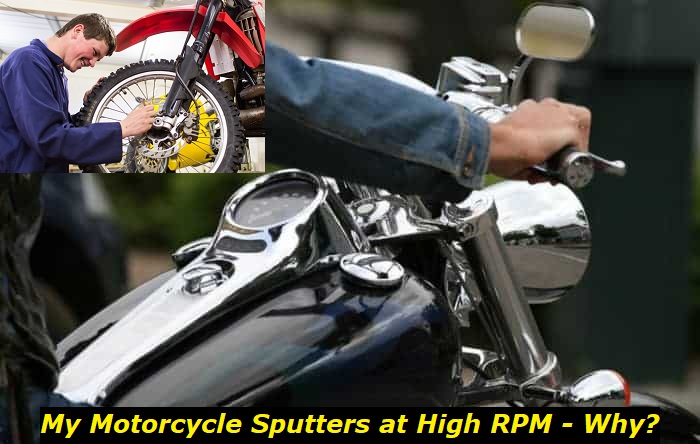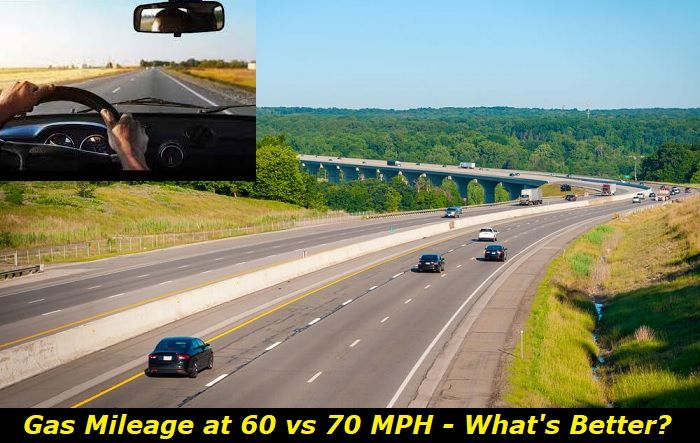There is a point in your motorcycle's lifespan when sputtering affects the acceleration such that you cannot comfortably ride at high RPM. Motorcycle sputtering is characterized by intermittent power loss when you shift to the next gear and try to twist the throttle hard in acceleration.
Your bike can sputter for one or more reasons. The primary culprit is the carburetor - it can either be improperly tuned or dirty. A faulty carburetor may cause gas or vacuum leaks, other possible reasons for your motorcycle to sputter.
Let's dive into the issue and root out the causes of motorcycle sputtering and how to solve the issue.

Reasons Why Your Motorcycle Sputters at High RPM
- Carburetor Issues
The carburetor is a great mechanical component that has been a crucial part of motorcycles for ages. The component does an excellent job sending the right mixture of gas and air to the engine, enough to keep your bike powered up. However, despite its excellent work, the carburetor can be finicky and cause an endless list of problems to your motorcycle.
If your motorcycle is carbureted and you are experiencing the sputtering issue, the carburetor may have faulted. The possible issues with the carburetor that can cause sputtering are improper tuning, vacuum leaks, and gas leaks.
Here is a breakdown of these three issues.
- An Improperly Tuned Carburetor
The sputtering on your bike could be because your carburetor needs tuning. When a carburetor is out of tune, the air/fuel screw needs to be adjusted. Also, if your bike has more than one carburetor, adjusting the balance between the carburetors could fix the sputtering problem.
To tune a carburetor, you should visit your nearest service center to have a professional mechanic fix the issue. The repair shop has the right tools and could cost you around $50.
- Vacuum Leaks
Vacuum leaks are caused by either cracked or brittle intake boots. Intake boots are among the cheapest issues to fix on your bike if you suspect them to be the reason your bike is sputtering.
Vacuum leaks could also be caused by unplugged vacuum ports that aren't in use. Some motorcycles are equipped with extra ports for customization. However, not many people actually use them. Port plugs are cheap and easy to install.
- Gas Leaks
Gas leaks lead to an insufficient supply of gas to the engine, which causes the bike to sputter. Gas leaks within the carburetor are usually caused by a cracked gasket s located right above the float bowl. The flat bowl is found at the bottom of the carb. It is easy to identify gas leaks because you can smell or see a gas leak within the carburetor.
Like vacuum port plugs, flat bowl gaskets are usually cheap to replace. The internet is rich with tutorial guides on replacing the float bowl. If your motorcycle has more than one carburetor, you should buy and replace all the float bowl gaskets.
Ignition System Problems
If you have checked and confirmed that your carburetor is fine or your bike uses fuel injectors instead of a carburetor, the next place to check is the ignition system. Your ignition system could suffer one of three issues; faulty ignition coil, damaged spark plugs, or loose spark plug wires.
- Faulty Ignition Coil
When you press the ignition switch, the coil creates the high voltage that produces the spark required for a successful combustion cycle. If you find your bike sputtering when accelerating, the ignition coil could be the cause. Faulty spark plugs or loose spark plug wires could damage the ignition coil.
Besides stuttering, other symptoms of a faulty ignition coil include loss of power, vibrations, misfiring, and backfiring. You will need a voltmeter to test whether your ignition coil is faulty. You can also use a multimeter that can measure ohms. For precise results, visit your nearest mechanic for assistance.
- Faulty Spark Plugs
Spark plugs create the bolt of electricity that causes the precise explosions that put the pistons in motion. The spark plugs are located right on top of the combustion chamber, which requires the right amount of vaporized fuel to generate the required energy. If the spark plugs are damaged by corrosion or excessive build-up on the insulator tips, they will not fire correctly. As a result, your bike will sputter at higher RPM.
It is simple to check your motorcycle's spark plugs. Just switch the bike off, and remove the rubber caps on the spark plugs. Then, remove the spark plugs carefully to examine the insulator tips. If you notice warping on the plugs or cracks on the ceramic element, your spark plugs are dead and require a replacement.
Additionally, if you notice excessive build-up on the spark plug insulator tips, you will also need to replace the plugs. A covered spark plug insulator inhibits the plugs from creating the right amount of spark for successful combustion.
You can also use the color of the build-up to know about your carburetor's air/gas mixture. If the insulator is covered in black or charcoal-like color, your engine is running too much fuel. If the metallic part of the spark plug insulator tip is covered in a white, chalk-like build-up, your engine is running lean. This issue is fixed with a simple carburetor tuning/ adjusting and can erase the stuttering problem.
Engine Timing Problems
It is less likely that an engine timing problem is causing your bike to stutter at high RPM, but it is a possibility worth checking. If you have checked all the above issues and none are present, you should visit a professional mechanic to check your engine for timing issues.
If this is the cause of your motorcycle sputtering, you could be looking at a much larger problem. Timing problems are often caused by valves timing being off and could cause more severe problems to your motorcycle. This is a common problem with V-Twin bikes.
Engine timing issues could cost a lot of money to fix. So, it is good to revisit the above issues; check the carburetor and the ignition system before bursting open the engine. You could spend a lot of time and money only to find that you missed the issue on the carburetor.
Sputtering Issues in Fuel-Injected Motorcycles
The carburetor has played a massive role in motorcycles but is being faced by fuel injectors. If you are rolling on a newer motorcycle, you probably are riding a fuel-injected bike. The issues we have covered above mostly affect carbureted bikes.
If your fuel-injected bike is puttering at high RPM, chances are the issue is coming from the fuel pump or the filter. This is because air/gas mixture is managed differently in fuel injection systems.
Run a fuel flow test to root out the cause of the sputtering issue on your bike. This is the best way to determine the cause because the fuel flow test simultaneously examines the fuel pump and filter.
What RPM Should I Ride at?
Many people may not know this, but the RPMs you ride at may affect your motorcycle positively or negatively. If you ride at lower RPMs, you have instant power at your disposal. Riding at lower RPMs is also an excellent trick for extending the life span of your engine and increasing fuel efficiency.
Riding at higher RPMs, on the other hand, causes a lot of vibrations. It also leaves you with no power to leverage when you need it. High RPMs impact your motorcycle's performance by manifolds.
It all depends on the bike and the rider. When determining your ideal RPM range, you should have two goals in mind; to take care of your motorcycle and avoid lugging, and to be safe and in control.
If you find yourself in a power range where you can't access power by a single twist on the throttle, you are either too high or too low on the RPM. For instance, if you shift to a lower gear, you leave space for instant acceleration.
Every motorcycle is different, and so is every rider. The best way is to experiment with your machine to see which RPM range works best for you - where you feel safe riding and where you haven't lost total control of your motorcycle's power.
Conclusion
The best thing about most of these issues is that they are easy to fix. It takes minutes to diagnose and fix an issue with the carburetor or the ignition system. You won't need mechanical training to fix these issues. The only thing that you must involve a professional mechanic in is the engine timing problems.
It is advisable to always have a certified mechanic at your disposal to consult when you have an issue that you aren't sure how to fix.
About the authors
The CarAraC research team is composed of seasoned auto mechanics and automotive industry professionals, including individuals with advanced degrees and certifications in their field. Our team members boast prestigious credentials, reflecting their extensive knowledge and skills. These qualifications include: IMI: Institute of the Motor Industry, ASE-Certified Master Automobile Technicians; Coventry University, Graduate of MA in Automotive Journalism; Politecnico di Torino, Italy, MS Automotive Engineering; Ss. Cyril and Methodius University in Skopje, Mechanical University in Skopje; TOC Automotive College; DHA Suffa University, Department of Mechanical Engineering






Add comment